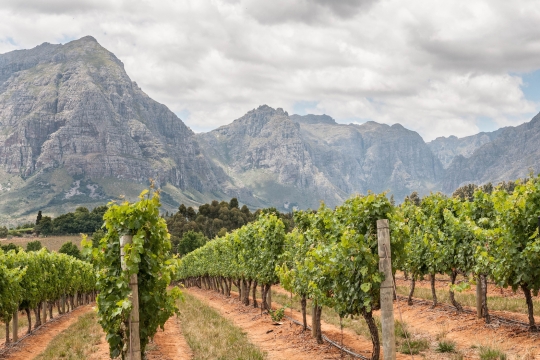CAPE TOWN, SOUTH AFRICA
The water flowing down the Berg River, towards the Cape West Coast and Saldanha Bay, is the lifeblood of two competing sectors: heavy industry, and agriculture. But as demand for this limited resource grows, how do the water managers decide who gets access to it, when the water in the river is already fully allocated between existing users?
This question is central to a new study that will help municipal and provincial authorities find a more integrated approach to making water-sensitive development and planning decisions for this important industrial hub.
‘Saldanha Bay has been identified by the National Planning Commission as a key industrial zone for the country,’ explains Jacob Muller, an economist specialising in applied microeconomics and econometrics with the University of Cape Town’s (UCT’s) Environmental Policy Research Unit (EPRU).
‘But there’s a big disconnect in planning around economic development and water resources here. And the fact that there are no new sources of water likely to become available here until at least 2022, means this is a significant constraint to development here.’
A proposed desalination plant, mooted by the Saldanha Bay municipality to help meet the water shortfall, is an example of this disconnect between planning and water management, Muller argues. Local authorities wanted to build a plant to bring more water online for the harbour and associated industries, but the plan has not been supported by national government. Local industry was also resistant to the development, owing to the high investment costs.
Since existing water resources are fully allocated between industrial, agricultural and household users, and the ‘ecological reserve’ (the amount of water which must to be left in the river system to keep it healthy), the only alternative for effective water management is to find more efficient ways of using what’s already there.
The study which Muller is doing through EPRU, based in UCT’s School of Economics, is to calculate the value of water in the Berg River, and see which are the most efficient users, and gauge which sectors give the most back to the community and the economy for each unit of water they use.
According to the national Department of Water Affairs, agriculture is the largest single user of water countrywide, currently accounting for 60 percent of total allocations nationally. However, irrigated agriculture, which uses the bulk of this water, contributes less than 1.4 percent to the GDP, and creates less than 2 percent of the country’s jobs.
Muller is applying a similar lens to the Berg River Catchment. He will compare irrigated farming activities - mostly table and wine grapes, and fruits such as pears and apples grown for export, along the 300km of river - with the big industries such as agri-processing and steel works, based in the bay’s industrial zone.
‘This is a thought exercise that will try to demonstrate the value of water in this catchment, and which sector gives the most ‘bang for buck’ in terms of its contribution to the local economy,’ he explains. With this kind of information, local and provincial authorities can allocate water rights to the most efficient users.
‘But there will be tradeoffs if policy makers favour one sector at the expense of another. This study will help them see what those opportunity costs are.’
Muller’s work is feeding into a larger report, commissioned by the national Water Research Commission (WRC) and the Western Cape provincial Department of Environmental Affairs and Development Planning. His part of the study is expected to be finalised by December 2016, and the overall report will be ready for delivery to provincial and local authorities towards the end of 2017.
